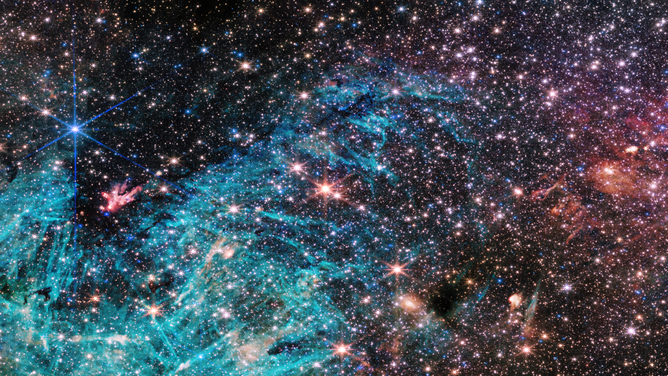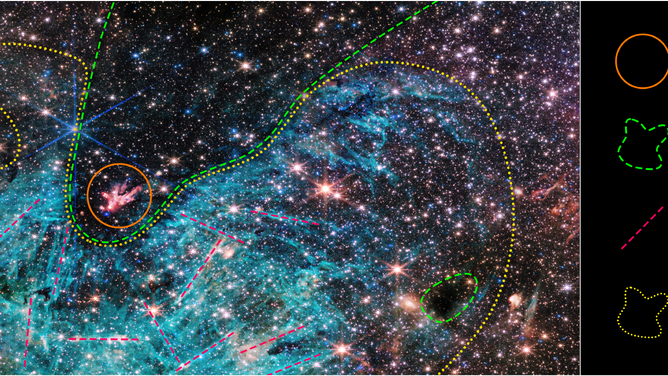Webb telescope finds surprises within heart of Milky Way galaxy
The James Webb Space Telescope helped astronomers discovered a massive star about 30 times the mass of our Sun within in the Milky Way's star-forming region Sagittarius C.
What is the James Webb Space Telescope?
According to NASA, the JWST sees the universe using infrared radiation, a form of light that we feel as heat and is invisible to human eyes.
Astronomers are getting a fresh look at the core of our home galaxy, the Milky Way, in new detail with NASA's James Webb Space Telescope.
Webb captured the image below of the star-forming region of the Milky Way known as Sagittarius C, which is about 300 light-years from our galaxy's supermassive black hole, Sagittarius A*.

The NIRCam (Near-Infrared Camera) instrument on NASA’s James Webb Space Telescope’s reveals a portion of the Milky Way’s dense core in a new light. An estimated 500,000 stars shine in this image of the Sagittarius C (Sgr C) region, along with some as-yet unidentified features. A large region of ionized hydrogen, shown in cyan, contains intriguing needle-like structures that lack any uniform orientation. NASA, ESA, CSA, STScI, and S. Crowe (University of Virginia).
According to NASA, the image was taken using Webb's Near-Infrared Camera and includes an estimated 500,000 stars. Among the thousands of stars are newly formed stars known as protostars. Within the new image is a protostar cluster, including a newly discovered massive protostar about 30 times the mass of our solar system's Sun.
JAMES WEBB TELESCOPE UNVEILS A NEW STAR FORM, DISPLAYING ‘FIERY HOURGLASS’
"There’s never been any infrared data on this region with the level of resolution and sensitivity we get with Webb, so we are seeing lots of features here for the first time," said observation team principal investigator Samuel Crowe, with the University of Virginia. "Webb reveals an incredible amount of detail, allowing us to study star formation in this sort of environment in a way that wasn’t possible previously."
Infrared light, unlike visible light, can pass through gas and dust, capturing sharp details of cosmic features.
Astronomers say they are just starting to dig into the detailed data from the James Webb Space Telescope's observations because there is a lot to unpack.

Approximate outlines help to define the features in the Sagittarius C (Sgr C) region. Astronomers are studying data from NASA’s James Webb Space Telescope to understand the relationship between these features, as well as other influences in the chaotic galaxy center. (Image: NASA, ESA, CSA, STScI, Samuel Crowe (UVA)
"The galactic center is a crowded, tumultuous place. There are turbulent, magnetized gas clouds that are forming stars, which then impact the surrounding gas with their outflowing winds, jets, and radiation," said Rubén Fedriani, co-investigator of the project with the Instituto Astrofísica de Andalucía in Spain.
EUROPE'S DARK-MATTER DETECTIVE TAKES FIRST IMAGES REVEALING DEEPEST EDGES OF OUR UNIVERSE
According to NASA, studying the Sagittarius C region with Webb will help astronomers understand how stars form and how different cosmic environments play a role in star formation.
